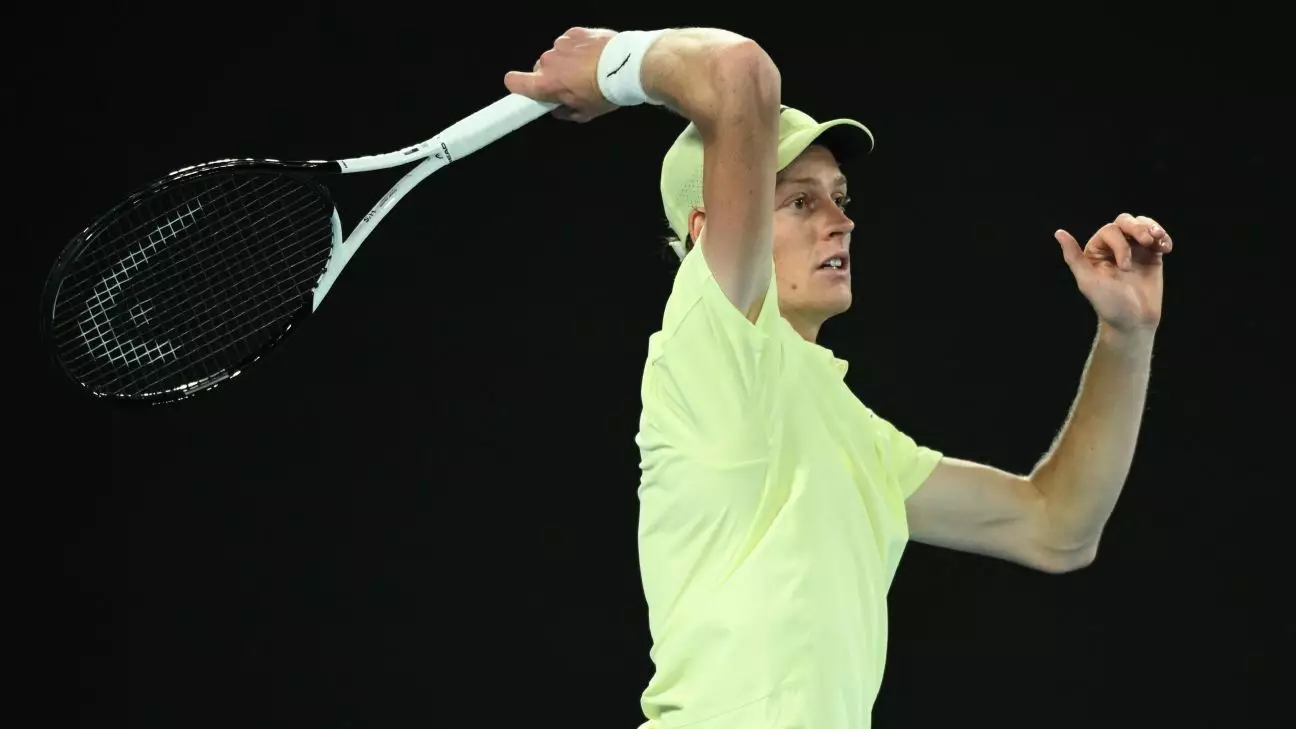Jannik Sinner, a rising star in the world of tennis, has found himself at the center of a scandal that has reverberated through the sport. Nearing the end of a three-month suspension for a doping violation, Sinner’s case raises profound questions about the integrity of the sport and the systems in place to protect athletes. This predicament is not merely a wake-up call for Sinner but a clarion call for the entire tennis community. With numerous players turning to anti-doping authorities for guidance, this situation highlights an urgent need for refined practices that can prevent unintentional violations.
Understanding the Fallout: Doping Violations and Their Implications
The crux of Sinner’s case revolved around the presence of clostebol, an anabolic agent, that made its way into his system due to a concerning loophole: contamination during physiotherapy sessions. This incident has left many players apprehensive and scrambling for information regarding how to safeguard themselves against similar allegations. The controversy is compounded by Iga Swiatek’s similar predicament, where she faced a brief suspension for testing positive for trimetazidine. The juxtaposition of these cases has stirred discontent among athletes who fear the process by which doping violations are handled may not always be equitable or transparent.
The International Tennis Integrity Agency (ITIA) recognizes the growing unease among athletes. Their efforts to educate and provide resources demonstrate a shifting paradigm. However, these responses might seem reactive rather than proactive, leading to questions about whether they are doing enough to prevent such situations from arising in the first place. In an era where reputations can be tarnished with a mere accusation, the stakes are unavoidable.
Public Perception and the Divided Community
The reactions within the tennis community, ranging from support to skepticism, are telling. Players like Novak Djokovic expressed disappointment and frustration, feeling that the confidentiality surrounding Sinner’s case left them uninformed and potentially vulnerable. Nick Kyrgios’ vehement criticism of the incident as “disgusting” underscores a broader sentiment that some players perceive unfairness in how these cases are managed. Conversely, figures like Rafael Nadal have come forward to advocate for Sinner, emphasizing his innocence and the importance of allowing the young athlete to refocus on his game.
The disparity in perceptions reveals a fracture in the community, where faith in the system is essential for collaboration and growth. While Nadal asserts that Sinner is a moral individual who deserves space to rebuild, the contrasting viewpoints also signal a pressing need for dialogue in the sport about transparency, fairness, and the procedures that govern it.
A Landscape of Uncertainty: Future Implications for Players
As Sinner prepares for his return to the courts, heading into the clay season and with the French Open looming on the horizon, the psychological weight of this experience cannot be underestimated. Although he has triumphed over significant obstacles, including winning prestigious titles such as the US Open and Australian Open — it is clear that Sinner’s journey back to a level of normalcy will not be linear. “The first games will be really difficult,” he stated, underscoring that the path forward will be fraught with challenges.
The unpredictability in tennis is mirrored in the reactions from fans and players alike. Sinner’s and Swiatek’s situations may alter how future generations of players approach their training and physical wellness routines. Professional athletes are already under towering pressure to perform, and now the threat of accidental violations heightens this burden even further. This environment can drive anxiety about not just physical performance but mental resilience.
The Role of Anti-Doping Measures in Restoration
The pathway to recovery from this controversy hinges on the actions of the ITIA and other stakeholders in the sport. Educating players on safe practices surrounding supplements, medication checks, and comprehensive guidelines on physiotherapy protocols is non-negotiable. This scenario serves as a critical lesson for all sports industries: regulations require vigorous scrutiny and adaptation to effectively shield athletes from unintentional transgressions.
As the tennis world waits to witness Sinner’s return, the complexities of doping law enforcement stand at a crossroads. The decisions made now will resonate through the ranks of professional tennis for years to come. This situation illuminates a pressing need for a reevaluation of existing anti-doping configurations to enhance athlete protection while maintaining a fair competitive landscape. As the sport navigates this turbulent chapter, the implications for both its athletes and its governing bodies will resonate far beyond the court.

